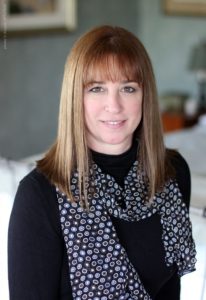 OPB’s first author interview of 2020 is with Heidi E.Y. Stemple. Over the years, I’d had three personal picture-book-related interactions with her. The first was a paid critique at an SCBWI regional event in Miami a few years back. The next was me participating in the famous Picture Book Boot Camp at Jane Yolen’s super-cool farmhouse back in 2017, where Heidi both cooked (OMG and YUM!) and helped out with feedback and discussions, plus she took a bunch of us owling! The most recent was last month at a Highlights Foundation workshop where Heidi served as a fac
OPB’s first author interview of 2020 is with Heidi E.Y. Stemple. Over the years, I’d had three personal picture-book-related interactions with her. The first was a paid critique at an SCBWI regional event in Miami a few years back. The next was me participating in the famous Picture Book Boot Camp at Jane Yolen’s super-cool farmhouse back in 2017, where Heidi both cooked (OMG and YUM!) and helped out with feedback and discussions, plus she took a bunch of us owling! The most recent was last month at a Highlights Foundation workshop where Heidi served as a fac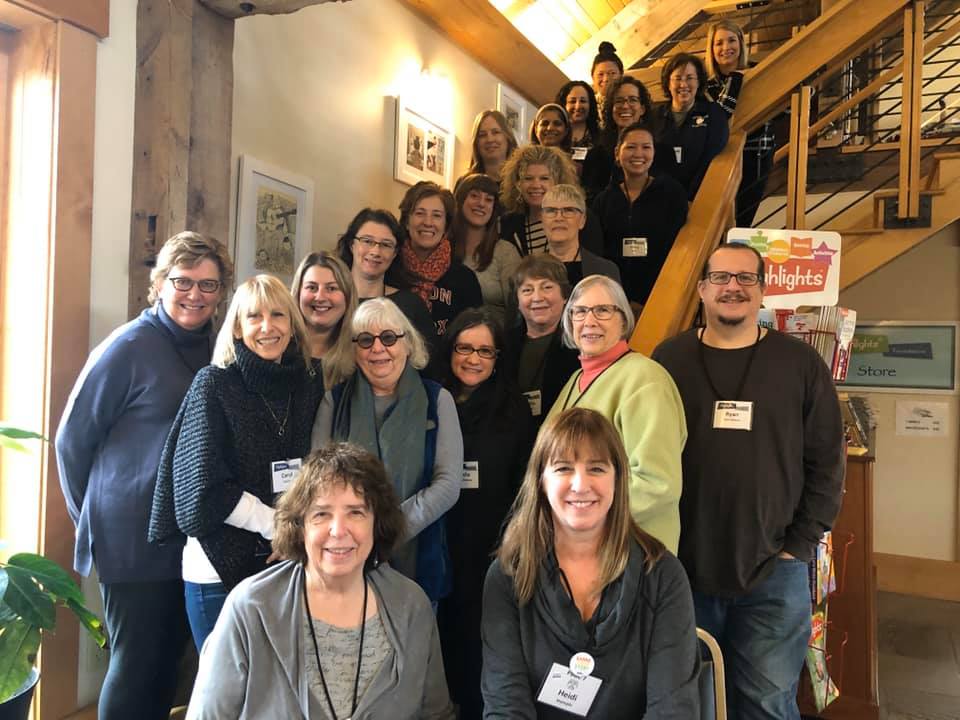 ulty member (she’s the one in the front on the right–I’m just above her to the right, though since all the rest of the people there were women, I’m pretty hard to miss!)
ulty member (she’s the one in the front on the right–I’m just above her to the right, though since all the rest of the people there were women, I’m pretty hard to miss!)
Let’s put it plainly: Heidi knows her stuff. I know that firsthand, which is why I’ve asked her to help kick off the year with an interview that’s designed to get all picture book writers—from the newbies to the done-it-forever folks—inspired to make 2020 a great picture book year for us all.
But I know readers always want a bit of biographical goodness before getting into the Qs and the As and the Ins and Outs, so here are seven things about Heidi.
- Lives next to her mom…by choice!
- Barred owl hoot is 100% authentic.
- Undergraduate degree was in psychology.
- Worked as a private investigator.
- Author of 25+ books (as well as oodles of short stories and poems).
- Is the little girl in Owl Moon.
- Grandfather Will was International Kite Flying Champion (and the inspiration for Heidi’s co-authored book A Kite for Moon).
With that, let’s zip right along to the interview. Let’s go!
website: www.heidieystemple.com
Twitter: @heidieys
Facebook: www.facebook.com/heidieystemple
Facebook: Owl Count
RVC: Let’s deal with the dinosaur in the room—your incredibly awesome mom, Jane Yolen (whose own OPB interview is here!). At what point did you realize the type of impact writing in general—and her writing, in specific—had on young readers?
HEYS: How do dinosaurs impact readers? (Bad joke?)
I grew up with a mom-writer and a father who was a bird watcher. Both those things are so intertwined into my upbringing that I cannot imagine a life without books and nature. As you can imagine, I have always been privy to people telling us what my mom’s writing has contributed to their and their children’s lives. But, I think that the full impact of this has really come in more recent times—when she and I began to work together so closely. When I started writing (I guess my “recent times” means in the last 25 years—ha!) and when I really took a deep dive into picture books—keeping up with the market and teaching—that is when I started paying attention to the real impact.
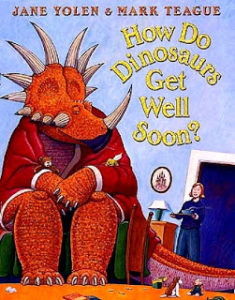 There is a moment any time writers are together that we say “and THAT is why we do this.” It’s often a reaction to something a kid reader, or a parent or teacher said. One kid, after a school visit, wrote to me and said “reading Bad Girls made me want to be a great writer.” Another couldn’t believe I had written about being a bird watcher because he thought he was the only person who loved owls so much and it was exciting to know there were more of us. But, there are bigger stories, too. The kid who, after being burned in an accident, wanted to share How Do Dinosaurs Get Well Soon? with every kid in the burn unit. The girl who wrote to say she had been an awful sister to her twin brother until she read Mapping the Bones and she was going to make a real effort to be better.
There is a moment any time writers are together that we say “and THAT is why we do this.” It’s often a reaction to something a kid reader, or a parent or teacher said. One kid, after a school visit, wrote to me and said “reading Bad Girls made me want to be a great writer.” Another couldn’t believe I had written about being a bird watcher because he thought he was the only person who loved owls so much and it was exciting to know there were more of us. But, there are bigger stories, too. The kid who, after being burned in an accident, wanted to share How Do Dinosaurs Get Well Soon? with every kid in the burn unit. The girl who wrote to say she had been an awful sister to her twin brother until she read Mapping the Bones and she was going to make a real effort to be better.
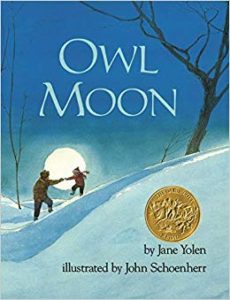 I have been talking about Owl Moon for so many years. I take the responsibility of being that little girl (my mom’s book is based on my father and my—as well as my brothers’—nighttime owling adventures) quite seriously. The fact is, many kids don’t have nature outside their backdoor, or a trusted adult to take them out at night. All too often, their first time out in the woods—or the only time– is within those pages.
I have been talking about Owl Moon for so many years. I take the responsibility of being that little girl (my mom’s book is based on my father and my—as well as my brothers’—nighttime owling adventures) quite seriously. The fact is, many kids don’t have nature outside their backdoor, or a trusted adult to take them out at night. All too often, their first time out in the woods—or the only time– is within those pages.
RVC: You avoided going into the “Family business” for a long time. What did you do along the way, and what skills/habits did those non-writing things give you that serve you well as an author?
HEYS: Every part of my journey to now impacts my writing—what I write about, how I write, why I write. After college, I worked as a probation/parole officer and a private investigator. I worked in and around law enforcement with victims and offenders for years. You can still find bits of this in my writing. Bad Girls is about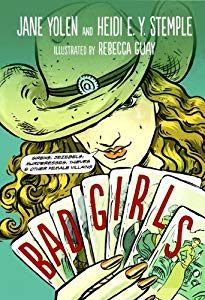 women who committed all sorts of crimes. The Unsolved Mysteries from History are about investigation. My forthcoming graphic novel called (tentatively) Maddi Mouse and the Private Spies is about solving a crime. On the flip side of this is my love of birds from my dad. You Nest Here With Me, Fly with Me, and Counting Birds come directly from the way he raised me.
women who committed all sorts of crimes. The Unsolved Mysteries from History are about investigation. My forthcoming graphic novel called (tentatively) Maddi Mouse and the Private Spies is about solving a crime. On the flip side of this is my love of birds from my dad. You Nest Here With Me, Fly with Me, and Counting Birds come directly from the way he raised me.
RVC: Your first publication was in a book called Famous Writers and Their Kids Write Spooky Stories. What’s the story of how that came to happen?
HEYS: I had just interviewed for a new job as a counselor at a battered woman’s shelter. I discovered I was pregnant on the same day I got the call saying I got the job. Problem was, I was so sick in my early pregnancy, I could barely leave the house. No way I could start a new job. I was bored. So, I accepted a co-authorship opportunity for a story with my mom.
During the writing, I discovered some things about myself. Mainly, that I could write fiction. I knew I was a good writer, but that had been primarily report and legal writing (at the Department of Corrections, I wrote a lot of really great PSIs—Pre-Sentence Investigations). But, also, I learned that I could write an ending. I had written lots of stories without endings. That was always what scared me about fiction. Not finding ideas, or the writing, or the revision. But, endings are intimidating.
Funny story—it wasn’t until years later that I realized that so many pieces of my life had wound up in that story. In fact, it was about solving a ghost mystery. Turns out (spoiler alert) the woman who became the ghost had been killed by her abusive husband. How did I not connect those dots?
RVC: Tell me why the majority of your books are picture books. What’s so special about them versus, say, MG or YA?
HEYS: I actually just love picture books. They are the perfect size. You are constrained by your 32 pages and there is very little wiggle room. You really have to boil down your story to its essence without losing the beauty of it. It is often a puzzle how to have enough and not too much—detail, texture, beautiful (or pithy or funny or lyrical) language. That economy of language is a challenge. And picture books are meant for sharing. Just last night, I read two of my children’s books aloud to a group of adults at my bird club. Many of them came up to me after and said how moving it was to be read to—that no one had read aloud to them in ages, if ever.
I do love a middle grade length, and I’m working on a couple longer-form manuscripts right now. YA isn’t for me. Too much angst.
My real love is picture books.
RVC: Many of your books are collaborations of one type or another, with Jane Yolen being a frequent partner. Talk about some of the Best Practices you’ve learned along the way in terms of effectively working with other creatives.
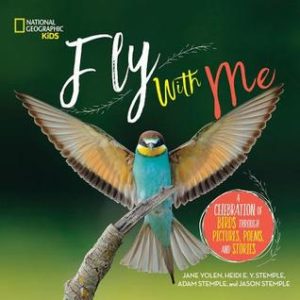 HEYS: Be open, be honest, be flexible, be organized, and be kind. I’m super bossy and opinionated, so not all these things are easy all of the time. But, if you are working with someone else, it’s really important to have a balance with that partner (or all of your collaborators, as in Fly with Me and Animal Stories, both of which I wrote with my mother and both brothers). If you don’t agree, stepping back and looking again with an open mind is one of my best pieces of advice. I am working with a non-family member on a new book right now and I have to remember that she and I don’t have shorthand yet. My mom and I work so closely on so many projects, we can just jump in without the niceties. In critiquing, the rule is always “say something nice first.” But, when you work more closely, and have no fear of hurting any feelings, the process is easier—more direct.
HEYS: Be open, be honest, be flexible, be organized, and be kind. I’m super bossy and opinionated, so not all these things are easy all of the time. But, if you are working with someone else, it’s really important to have a balance with that partner (or all of your collaborators, as in Fly with Me and Animal Stories, both of which I wrote with my mother and both brothers). If you don’t agree, stepping back and looking again with an open mind is one of my best pieces of advice. I am working with a non-family member on a new book right now and I have to remember that she and I don’t have shorthand yet. My mom and I work so closely on so many projects, we can just jump in without the niceties. In critiquing, the rule is always “say something nice first.” But, when you work more closely, and have no fear of hurting any feelings, the process is easier—more direct.
RVC: Your jointly created book with your mom, You Nest Here With Me, has a unique story from idea to publication. What happened?
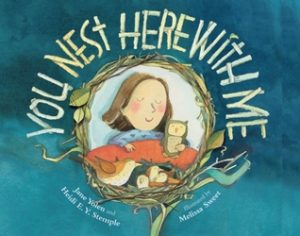 HEYS: You Nest Here With Me was written and sold more than 11 years before it was published. We sold the manuscript to the amazing Liz Van Doren when she worked at Harcourt. We were working with her when the publishing house was purchased by a bigger house and Liz was let go. Our book was orphaned. The new editor who inherited it didn’t love it as much. It got shuffled around and eventually we got the rights back. That was just about the time that Liz Van Doren arrived at Boyds Mills Press. Turns out, she had been watching to see if and when the book come out and she asked after it. We sent it immediately back to her and she, for the second time, purchased it. Melissa Sweet agreed to illustrate (we were thrilled!) and we got on her 3‑year wait list (she is very much in demand). We had already waited 8 years, what was another 3? But, she got to it in early, 2 years later, and the book finally came out—11 years after that first sale.
HEYS: You Nest Here With Me was written and sold more than 11 years before it was published. We sold the manuscript to the amazing Liz Van Doren when she worked at Harcourt. We were working with her when the publishing house was purchased by a bigger house and Liz was let go. Our book was orphaned. The new editor who inherited it didn’t love it as much. It got shuffled around and eventually we got the rights back. That was just about the time that Liz Van Doren arrived at Boyds Mills Press. Turns out, she had been watching to see if and when the book come out and she asked after it. We sent it immediately back to her and she, for the second time, purchased it. Melissa Sweet agreed to illustrate (we were thrilled!) and we got on her 3‑year wait list (she is very much in demand). We had already waited 8 years, what was another 3? But, she got to it in early, 2 years later, and the book finally came out—11 years after that first sale.
The moral of this story—never give up.
RVC: I think some people have the misconception that every book idea created by a successful writer like you somehow readily translates into a publication deal. Care to dispel that belief?
HEYS: That is hilarious! I have drawers and files of unsold manuscripts. Some are no good (what was I thinking??) and some are quite wonderful and it baffles me why they don’t sell. But, at the risk of repeating myself, I will say again, never give up. I have a picture book manuscript that I sent around and it got a bunch of rejections. The common theme of the comments was “would she consider writing a longer book about this character?” Why yes! I would absolutely consider it. I, too, love the character. So, I am working on converting the rhyming picture book manuscript into a chapter book. That, too, may not sell. But, you never know until you try.
I have lots of ideas. I just keep writing and sending them out. Eventually some of them will sell, but not all of them. You never know what will happen when, maybe years from now, I pull them out—maybe the market will have changed. Maybe I will be a better writer by then and will give them a new life. Maybe I will look at them and know why they were rejected. But, I will keep writing and growing and, hopefully, selling books!
RVC: How vital is it for picture book authors to have literary agents, and what do you appreciate most about yours?
HEYS: Frankly, my agent (the amazing Elizabeth Harding at Curtis Brown, Ltd. [see here OPB interview here!]) does all the stuff I have no desire to do. She (and her fab assistants and the legal team and the financial team, etc.) take care of contracts and submissions, make sure I’m paid, deal with issues in the market, chase down books promised in contracts that we haven’t received. All the stuff. Also, she is on top of the market in a way I am not. If I send her a manuscript, she knows where to send it—who is looking for quirky character-driven stories vs. who is looking for girl STEM books or quiet lyrical texts. And, her name opens doors, or more accurately, allows my stuff to be seen without hitting the slush pile. It is much harder to work as an unagented writer or illustrator in today’s market.
That being said, it is not impossible. Many people are happily unagented.
RVC: Let’s talk craft issues. What’s most often the difference between a really good picture book manuscript that doesn’t get accepted, and a manuscript that DOES get snapped up? What’s the secret sauce that even good writers sometimes forget or don’t use often enough?
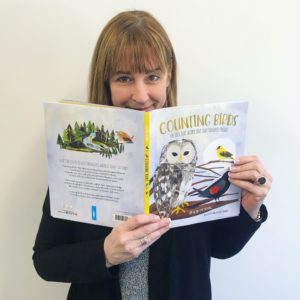 HEYS: There is no secret sauce. There is no magic. Well, there is a little magic, but mostly it’s pretty feet-on-the-ground, fingers-on-the-keypad work. For me, the difference between a brilliant and a blah manuscript is the language. The problem with this question is that the language isn’t the same for every book. Each book is unique, but that story voice is what sends it up and over the top. For You Nest Here With Me, it’s the combination of the brevity of text and a spot-on rhyme paired with the nonfictional element. It’s the pairing of themes—birds and home—that works. In Counting Birds, I took a nonfiction subject and boiled it down (fewer details, more heart) to a read aloud, making it accessible to the very youngest readers. I like to think the alliteration I use sparingly and gently helps. And the fact that the arc of the book begins with one point and grows exponentially, just like the subject matter, bringing it back to the beginning only on the last page. In A Kite for Moon, we collapsed time to show the growth of the character to adulthood in a way that excites me every time I read it aloud and, in my humble opinion, we lay out an ahhhh-worthy ending without telling the reader how to feel.
HEYS: There is no secret sauce. There is no magic. Well, there is a little magic, but mostly it’s pretty feet-on-the-ground, fingers-on-the-keypad work. For me, the difference between a brilliant and a blah manuscript is the language. The problem with this question is that the language isn’t the same for every book. Each book is unique, but that story voice is what sends it up and over the top. For You Nest Here With Me, it’s the combination of the brevity of text and a spot-on rhyme paired with the nonfictional element. It’s the pairing of themes—birds and home—that works. In Counting Birds, I took a nonfiction subject and boiled it down (fewer details, more heart) to a read aloud, making it accessible to the very youngest readers. I like to think the alliteration I use sparingly and gently helps. And the fact that the arc of the book begins with one point and grows exponentially, just like the subject matter, bringing it back to the beginning only on the last page. In A Kite for Moon, we collapsed time to show the growth of the character to adulthood in a way that excites me every time I read it aloud and, in my humble opinion, we lay out an ahhhh-worthy ending without telling the reader how to feel.
Here are some other books that I think have been written perfectly:
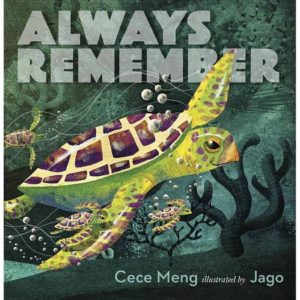 Water Is Water (Miranda Paul, Jason Chin)
Water Is Water (Miranda Paul, Jason Chin)
Circus Train (Jennifer Cole Judd, Melanie Matthews)
Always Remember (Cece Meng, Jago)
P. Zonka Lays An Egg (Julie Paschkis)
The Dress and the Girl (Camille Andros, Julie Morstad)
RVC: You’re a well-known fan of backmatter. What’s your secret to making it a meaningful part of the book versus just an info dump of extra research the author did?
HEYS: Remembering who you are writing for is key–you are either writing the backmatter for the same kid who is reading the book or for the adult who will need scaffolding for questions after. I prefer to write it for the child reader. Make sure it’s organized. And, I like to answer 2 questions:
- Why me?
- Why this story?
Answering these questions give the child reader a deeper connection to the book because they have a connection to why I wanted to write it.
RVC: What’s the most unusual-but-still-effective backmatter you’ve run across?
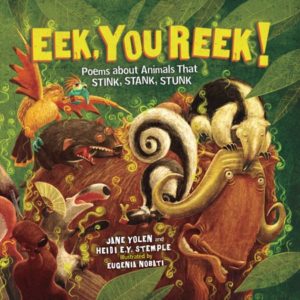 HEYS: I love all backmatter. I love writing backmatter. One of my favorite things I’ve written is the backmatter in Eek, You Reek! in which I got to write a list of stinking words and then define them. Of course, they all mean “stink” (in some form) so I used humor to differentiate them. For example, “Bouquet: This should refer to the lovely smell of flowers, but in this case, it means the wafting smell of ick.”
HEYS: I love all backmatter. I love writing backmatter. One of my favorite things I’ve written is the backmatter in Eek, You Reek! in which I got to write a list of stinking words and then define them. Of course, they all mean “stink” (in some form) so I used humor to differentiate them. For example, “Bouquet: This should refer to the lovely smell of flowers, but in this case, it means the wafting smell of ick.”
I love backmatter that connects fictional elements of a story to real life subjects. A new fun one I just discovered is in a book about a girl who is teleported different places because of shoes. The backmatter tells you nonfictional information about women who wore that type of shoe in history. Brilliant! Melissa Sweet’s use of endpages as star maps in Tupelo Rides the Rails is a brilliant way to add in supplemental information. Or the amazing diagram of the squid’s parts in Giant Squid. I love silly backmatter like in Some Pets that points out all the pets in the book (and gives them names as well as species) for very young readers. I am always fascinated with timelines that tie the book’s subject into historical context. Good backmatter almost always invites the reader back into the book–and what is better than having a kid read your book?
Having that kid read it twice!
RVC: Here’s the last question for the first part of the interview. What does writing success look like to you?
HEYS: I am not trying to be a bestseller or an award winner. I just want to keep writing. I am not dismissing those things—they are great. Every sale means I can pay my bills and eat. Every award means my book will be discovered by more schools and libraries and, therefore, read by more children. And, I love stickers on my books! Counting Birds has 5 now and I delight in putting them all on the cover. But, really, it’s just being able to continue working that is my idea of success.
RVC: Here it comes—the much-ballyhooed and never-quite-equaled OPB LIGHTNING ROUND! Speed-of-sound questions followed by speed-of-light answers, please! Ready?
HEYS: Let’s do this!
RVC: What secret talent do you have that nobody would suspect?
HEYS: Most people sing in the shower—I practice owl calls in the shower.
RVC: Most underappreciated bird?
HEYS: Blue-footed booby. People get stuck at its name and don’t see how amazing this little show off is. Go Google its amazing courtship walk.
RVC: The one food you could eat every day for the rest of your life?
HEYS: Cheese. Also pancakes.
RVC: Your favorite three indie bookstores?
HEYS: I’m going to choose my locals: the Eric Carle Museum Bookstore, Odyssey Bookshop, and we have a new one I’d like to give a shout out to, even though I haven’t been there yet: High Five Books. But, I could make a very, very long list here.
RVC: The best non-Yolen picture book of 2019?
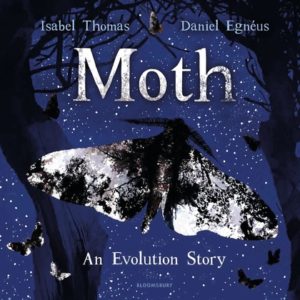 HEYS: Zero percent chance of me being able to answer this! But, I am heading to Carle Museum Bookstore to buy a copy of Moth (a gorgeous new nonfiction about natural selection) and Margarita Engle’s new Dancing Hands because it looks so gorgeous.
HEYS: Zero percent chance of me being able to answer this! But, I am heading to Carle Museum Bookstore to buy a copy of Moth (a gorgeous new nonfiction about natural selection) and Margarita Engle’s new Dancing Hands because it looks so gorgeous.
RVC: Three words that sum up your picture book philosophy?
HEYS: Language, compression, readers.
RVC: Thanks so much, Heidi!

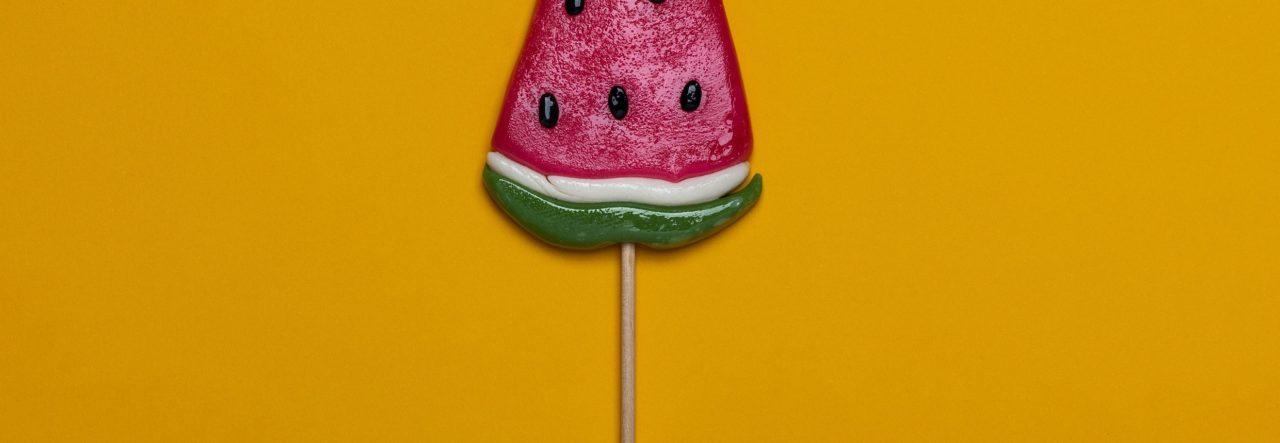
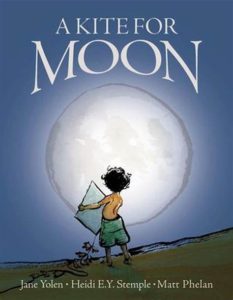
Heidi and Ryan, this is such a wonderful, informative and inspirational interview! Thank you both!
Thanks for the kind words. I’ll tell you my secret, Carol–I’m stacking the deck with interview subjects who are total pros. They do a fabulous job and they make me look great. Heidi was a hoot to work with, too.
The Vegetable doesn’t fall very far from the tree, as we say in the Yolen-Stemple family. Am I proud of my smart, gorgeous, generous daughter? You bet. I wish she ran the world. But then she wouldn’t have time to write her marvelous books.
Heidi WAS terrific, right? No surprise there! And just in case it’s not stunningly clear–an unexpected Jane Yolen (pop-in is ALWAYS welcome at Only Picture Books. Thanks for stopping by!